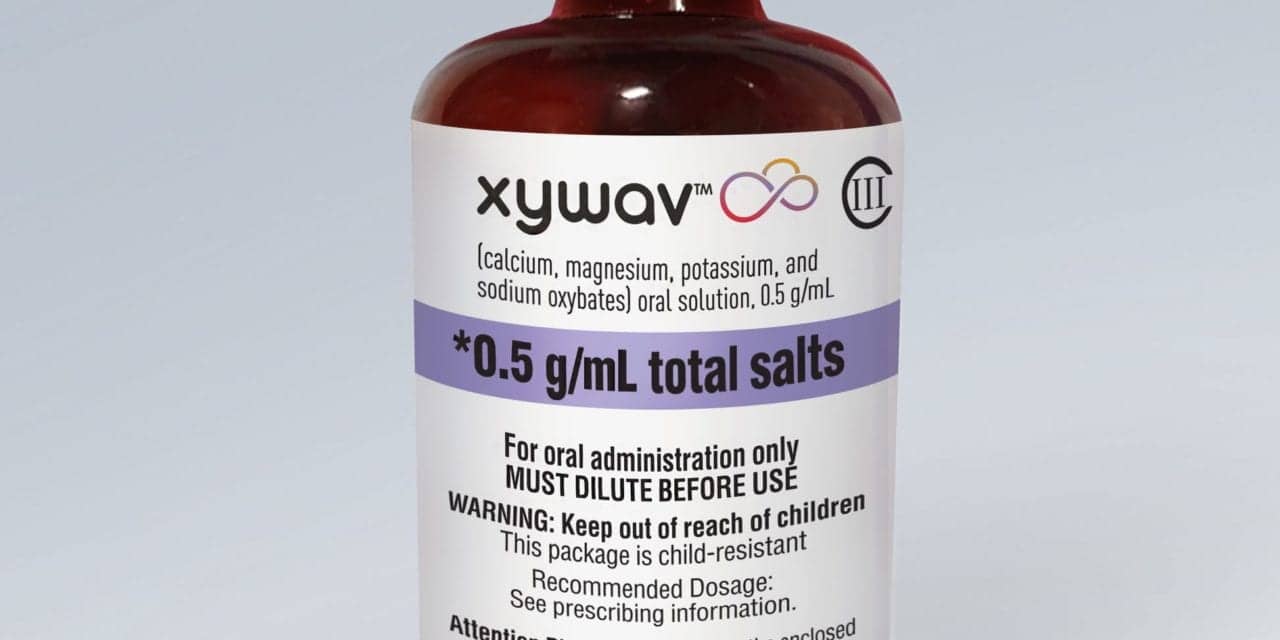During the second quarter, Jazz Pharmaceuticals registered a 39% year-over-year growth in net product sales of its low-sodium Xywav, reflecting its rising adoption, according to the company’s latest financial results and business highlights.
More than 50% of Jazz’s oxybate revenues are now driven by Xywav, a treatment for narcolepsy and idiopathic hypersomnia (IH). The drug annualizes at well over $1 billion.
For Q2, Jazz reported the following business updates for its key commercial products:
Xywav (calcium, magnesium, potassium, and sodium oxybates) oral solution:
- Xywav net product sales increased 39% to $326.6 million in Q2 compared to the same period in 2022.
- There were approximately 11,500 active Xywav patients exiting Q2.
- The company presented robust data sets at two medical meetings in Q2, emphasizing leadership in neuroscience and commitment to advancing the understanding of sleep disorders.
- Six presentations at American Academy of Neurology Annual Meeting, including a study that explored the increased risk of hypertension onset among patients with narcolepsy newly treated with Xyrem. The study detected increased risk of new-onset hypertension, within 180 days, among normotensive patients with narcolepsy initiating treatment with high-sodium oxybate, even among patients without a history of cardiovascular disease.
- Seven presentations at SLEEP 2023, including real-world TENOR study of adults with narcolepsy that demonstrated most patients preferred Xywav over Xyrem due to its lower sodium content.
Xywav for narcolepsy:
- There were approximately 9,300 narcolepsy patients taking Xywav exiting Q2.
- The benefits of reducing sodium intake continue to resonate with patients and prescribers.
- FDA continues to recognize seven years of Orphan Drug Exclusivity, through July 2027, for Xywav in narcolepsy. FDA published its summary of clinical superiority findings stating that “Xywav is clinically superior to Xyrem by means of greater safety because Xywav provides a greatly reduced chronic sodium burden compared to Xyrem.” Further, FDA stated that “the differences in the sodium content of the two products at the recommended doses will be clinically meaningful in reducing cardiovascular morbidity in a substantial proportion of patients for whom the drug is indicated.” For clarity, the authorized generics of Xyrem contain the exact same drug product as branded Xyrem.
- Xywav is the only approved oxybate therapy that does not carry a warning and precaution related to high sodium intake.
Xywav for idiopathic hypersomnia:
- There were approximately 2,200 idiopathic hypersomnia patients taking Xywav exiting Q2.
- Jazz survey of sleep specialists indicates 70% anticipate increasing their prescribing of Xywav for idiopathic hypersomnia over the next six months, and new prescribers continued to grow in Q2.
- Xywav is the first and only treatment approved by FDA to treat the full condition of idiopathic hypersomnia.
- FDA recognized Orphan Drug Exclusivity for idiopathic hypersomnia extending regulatory exclusivity to August 2028.
Xyrem (sodium oxybate) oral solution:
- Xyrem net product sales decreased 41% to $159.8 million in Q2 compared to the same period in 2022, reflecting the continued adoption of Xywav by patients with narcolepsy and the launch of a high-sodium oxybate AG in January 2023.
- Royalties from high-sodium oxybate AG were $5.5 million in Q2. Due to the royalty structures within the AG agreements, we expect the royalties from AGs to be significantly higher in the second half of 2023 relative to the first half.
Oxybate (Xywav and Xyrem):
- Total revenues for the combined oxybate business, including royalties from a high-sodium oxybate AG in Q2, decreased 2% to $491.8 million in Q2 compared to the same period in 2022.
- Average active Jazz oxybate patients on therapy was approximately 16,200 in Q2, a decrease of 5% compared to the same period in 2022.
Additionally, Jazz continues to progress JZP441, a potent, highly selective oral orexin-2 receptor agonist designed to activate orexin signaling with the potential to be applicable in the treatment of narcolepsy, idiopathic hypersomnia, and other sleep disorders.
A phase 1 development program to evaluate safety, tolerability, pharmacokinetics, and pharmacodynamics of JZP441 in sleep-deprived healthy volunteers is ongoing. The company expects initial proof of concept in healthy volunteers in 2023.



